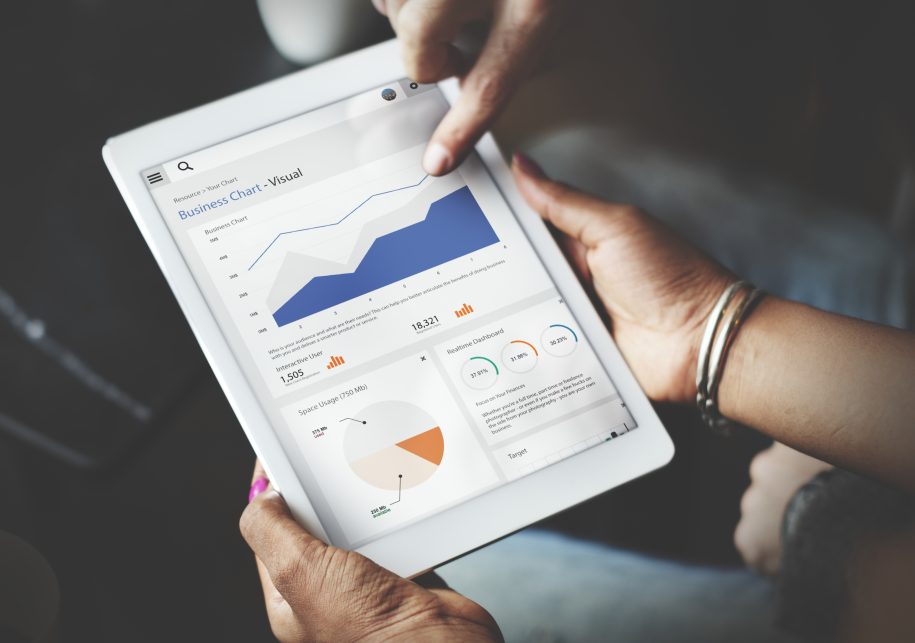Introduction
In today’s data-driven world, organizations rely heavily on data to make informed decisions and gain a competitive edge. However, the value of data lies in its quality. Poor data quality can lead to incorrect analysis, flawed insights, and ultimately, poor decision-making. This is where data quality metrics come into play. By effectively tracking these metrics, organizations can ensure that their data is accurate, reliable, and fit for purpose.
What are Data Quality Metrics?
Data quality metrics are quantitative measures used to assess the quality of data. These metrics evaluate various aspects of data, such as accuracy, completeness, consistency, timeliness, and validity. By tracking these metrics, organizations can identify and address data quality issues, monitor improvements over time, and ensure data integrity.
What are the 5 Measures of Data Quality?
- Accuracy: This metric measures how closely the data reflects the true values or facts. It assesses the correctness and precision of data.
- Completeness: This metric evaluates whether all required data elements are present and if there are any missing values or gaps in the dataset.
- Consistency: Consistency measures the level of harmony and coherence among different data sources, ensuring that data is synchronized and free from contradictions.
- Timeliness: Timeliness measures how up-to-date the data is and whether it is available within an acceptable timeframe for decision-making.
- Validity: Validity assesses whether the data conforms to predefined rules, standards, and constraints, ensuring data accuracy and reliability.
Importance of Tracking Data Quality Metrics
Tracking data quality metrics is essential for various reasons. Firstly, accurate and reliable data forms the bedrock for informed decision-making. Consequently, by consistently monitoring these metrics, organizations can uphold the integrity of their data, thereby empowering them to make confident decisions based on precise insights. Secondly, compliance with regulatory requirements is a paramount concern for many industries. Through vigilant tracking of data quality metrics, organizations can ensure adherence to these regulations, mitigating the risk of penalties and legal complications.
Data quality metrics play a pivotal role in identifying areas of frequent data quality issues, offering valuable insights for process improvement. This proactive approach enables organizations to implement necessary enhancements, thereby preventing future data quality problems. Lastly, tracking these metrics contributes to cost reduction. Poor data quality often results in costly errors, rework, and inefficiencies. By monitoring them, organizations can detect and address data quality issues early on, effectively minimizing associated costs.
KPI for Data Quality
Key Performance Indicators (KPIs) are essential for measuring the effectiveness of tracking data quality metrics. Some common KPIs for data quality include:
- Data Accuracy KPI: This KPI measures the accuracy of data entries, providing insights into the overall quality of data.
- Data Completeness KPI: The data completeness KPI assesses the completeness of data entries, indicating whether all required information is present.
- Data Consistency KPI: This KPI evaluates the consistency among different data sources, highlighting any discrepancies or contradictions.
- Data Timeliness KPI: Timeliness KPI measures the timeliness of data availability, ensuring that decision-makers have access to up-to-date information.
- Data Validity KPI: The data validity KPI assesses the validity of data entries, ensuring that they conform to predefined rules and constraints.
By tracking these KPIs, organizations can monitor the effectiveness of their data quality initiatives and identify areas for improvement.
How Do You Quantify Data Quality?
Quantifying data quality involves assigning numerical values to different metrics and aggregating them to provide an overall measure of data quality. There are various approaches to quantify data quality, including:
- Weighted Scoring: Assigning weights to each data quality metric based on its importance, and calculating a weighted average to obtain an overall data quality score.
- Thresholds: Setting predefined thresholds for each data quality metric, and assessing whether the data meets these thresholds to determine its quality.
- Data Quality Index: Creating a composite index that combines multiple data quality metrics into a single score, providing a holistic measure of data quality.
The choice of quantification method depends on the organization’s specific requirements and the complexity of the data being analyzed.

Key Challenges
While the importance of tracking data quality metrics cannot be overstated, organizations frequently encounter several challenges in this crucial process. Firstly, the escalating volume and variety of data contribute to the complexity of tracking data quality metrics. The need to manage both structured and unstructured data from diverse sources poses a significant challenge, making it arduous to maintain consistency and accuracy. Furthermore, the integration of data from different systems and sources often gives rise to data quality issues. Inconsistent data formats, duplicate records, and conflicting data definitions create hurdles in effectively tracking these metrics.
Another challenge lies in the realm of data governance, where the absence of clear policies and processes impedes the effective tracking of data quality metrics. Establishing robust data governance frameworks is imperative for ensuring data quality throughout its lifecycle. Lastly, technical limitations pose barriers to tracking these metrics, as organizations may grapple with constraints in terms of budget, resources, and technical expertise. This limitation makes the implementation of comprehensive data quality tracking systems a daunting task for many organizations.
What is Scorecard in Data Quality?
A data quality scorecard is a visual representation of data quality metrics, typically presented in a graphical format. It provides a clear overview of the organization’s data quality performance, highlighting areas of strengths and weaknesses. A data quality scorecard enables stakeholders to quickly understand the state of data quality and make data-driven decisions to improve it.
Best Practices for Effectively Tracking Data Quality Metrics
To enhance the effectiveness of data quality tracking, organizations should adhere to these recommended best practices. Firstly, it is crucial to define clear goals for data quality tracking initiatives, aligning efforts with the organization’s overall data quality strategy. Additionally, establishing precise data quality standards and guidelines is paramount, encompassing aspects such as accuracy, completeness, consistency, timeliness, and validity to meet specific organizational requirements.
Employing data profiling techniques is another essential step, enabling organizations to analyze data structure, content, and quality, and subsequently prioritize efforts based on identified issues. Furthermore, continuous monitoring of data quality metrics and the generation of regular reports facilitate the tracking of progress over time, revealing trends, patterns, and areas for improvement. Complementing these efforts, providing training programs to enhance data literacy and awareness among employees is imperative. Fostering a culture of data-driven decision-making ensures that everyone within the organization takes responsibility for data quality.
Some Tools and Technologies
Several tools and technologies can aid in tracking data quality metrics:
- Data Quality Management Tools: These tools provide comprehensive capabilities to track, measure, and improve data quality. They often include features such as data profiling, data cleansing, and data enrichment.
- Data Quality Dashboards: Dashboards provide visual representations of these metrics, enabling stakeholders to monitor data quality in real-time. They offer interactive visualizations and drill-down capabilities for deeper analysis.
- Data Quality Assessment Tools: These tools assess data quality against predefined rules and provide detailed reports on data quality issues and recommendations for improvement.
- Automated Data Validation Tools: Automated data validation tools ensure that data meets predefined criteria and performs checks on data integrity, accuracy, and consistency.
Data Quality Metrics Python
Python, a popular programming language, offers numerous libraries and frameworks that facilitate tracking data quality metrics. Some commonly used Python libraries for data quality metrics include:
- Metridev: is a analytics plataform that provide real intelligence for data-driven engineering teams. It analyze metrics to understand where engineering effort is being spent and to improve planning and forecasting.
- numpy: numpy is a fundamental library for scientific computing in Python. It offers functions for numerical operations, statistical analysis, and data validation.
- scikit-learn: scikit-learn is a machine learning library that can be utilized for data quality assessment and anomaly detection.

What is a Data Quality Dashboard?
A data quality dashboard is a centralized platform that provides real-time visibility into data quality metrics. It presents key data quality indicators, trends, and anomalies in an easy-to-understand visual format. Data quality dashboards enable stakeholders to monitor data quality at a glance, identify areas of concern, and take corrective actions promptly.
Integrating Data Quality Metrics into the Software Development Lifecycle
Integrating data quality metrics into the software development lifecycle is imperative for maintaining consistent data quality throughout the development process. To achieve this, it is essential to define data requirements early in the software development stages, outlining metrics, thresholds, and acceptance criteria. Moreover, implementing data validation mechanisms at various stages of the development lifecycle becomes crucial, ensuring that data is validated for quality and integrity before utilization in analysis or decision-making.
Rigorous data quality testing during the testing phase is necessary, involving the validation of data against predefined rules and verifying accuracy, completeness, consistency, and other data quality metrics. To sustain data quality, it is essential to establish processes for continuous monitoring in the production environment. This proactive approach ensures the prompt identification and resolution of any data quality issues that may arise.
The Future of Data Quality Metrics Tracking
As organizations increasingly rely on data for decision-making, the importance of tracking data quality metrics will continue to grow. With emerging technologies such as artificial intelligence and machine learning, automated data quality tracking and anomaly detection will become more sophisticated. Additionally, the integration of data quality metrics into data governance frameworks and regulatory compliance will be emphasized. Ultimately, organizations that effectively track these metrics will gain a competitive advantage in the data-driven era.
Conclusion
Data quality metrics play a crucial role in ensuring that organizations have accurate, reliable, and fit-for-purpose data. By effectively tracking these metrics, organizations can identify data quality issues, monitor improvements, and make data-driven decisions with confidence. However, tracking data quality metrics comes with its challenges, including data complexity, integration issues, and technical limitations. By following best practices and leveraging appropriate tools and technologies, organizations can overcome these challenges and establish robust data quality tracking systems. As the future of data-driven decision-making unfolds, tracking data quality metrics will remain a critical aspect of organizational success.
IT METRICS TO BECOME AN EXPERT














Leave a Reply